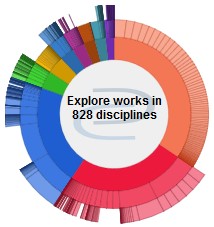-

This side of philosophy: literature and thinking in twentieth-century Spanish letters
Stephen D. Gingerich
Assesses a distinct style of thinking in twentieth-century Spanish writing, one in which literature plays a central role in reaching behind philosophy to essential sources of life and meaning
-

Crossing Over: Redefining the Scope in Border Studies
Antonio Medina-Rivera
The present volume brings together selected proceedings of the 2005 Cleveland State University Symposium “Crossing Over: Learning to Navigate the Borderlands of Intercultural Encounters.” The collection of essays offers some samples of the complex and potentially infinite array of investigations that the newly expanded field of ‘Border Studies’ can add to the academy’s scholarly enterprise. The articles collected in this volume demonstrate innovative approaches to comparative explorations of topics in American, Latin-American, European, and Post-Colonial literature as well as Linguistics, History and Education.
-

Constructing Identities: The Interaction of National, Gender and Racial Borders
Antonio Medina-Rivera and Lee F. Wilberschied
The basic concern of border studies is to examine and analyze interactions that occur when two groups come into contact with one another. Acculturation and globalization are at the heart of border studies, and cultural studies scholars try to describe the possible interactions in terms of conflicts and resolutions that become the result of those possible encounters. The present book is a peer-reviewed selection of papers presented during the IV Crossing Over Symposium at Cleveland State University held in October, 2011, and it is a follow-up to our discussion on border studies. The main focus of this volume is historical, [inter]national, gender and racial borders, and the implications that all of them have in the construction of an identity.
-

In, Out, and Beyond: Studies on Border Confrontations, Resolutions, and Encounters
Antonio Medina-Rivera and Lee F. Wilberschied
The essays presented in this volume are a peer-reviewed selection of some of the best papers presented during the 3rd Crossing Over Symposium at Cleveland State University from October 9 11, 2009. Scholars from the United States, Canada, Belgium, France, Spain, Italy, India, Israel, and the United Kingdom came together to examine border experiences from different points of view. Originally the organizers called upon a diversity of borderland possibilities for this conference: cultural, political, educational, religious, international, intranational, linguistic, gender, ideological, age, tribal, social class/caste, identity, and neighborhoods. The definition of borderland was not limited to territorial spaces, but rather was open to any kind of confrontation/encounter affecting different situations of our lives. The call for this conference was interdisciplinary in nature, and its intent was to open a discussion between the humanities and the social sciences on the dynamic issue of borders.
-

Reconstructing the Slave: The Image of the Slave in Ancient Greece
Kelly L. Wrenhaven
Although the importance of slavery to Greek society has long been recognized, most studies have primarily drawn upon representations of slaves as sources of evidence for the historical institution, while there has been little consideration of what the representations can tell us about how the Greeks perceived slaves and why. Although historical reality clearly played a part in the way slaves were represented, Reconstructing the Slave stresses that this was not the primary purpose of these images, which reveal more about how slave-owners perceived or wanted to perceive slaves than the reality of slavery. Through an examination of lexical, visual and literary representations of slaves, the book considers how the image of the slave was used to justify, reinforce and naturalize slavery in ancient Greece.
Printing is not supported at the primary Gallery Thumbnail page. Please first navigate to a specific Image before printing.




